14Common hazel
Corylus avellana
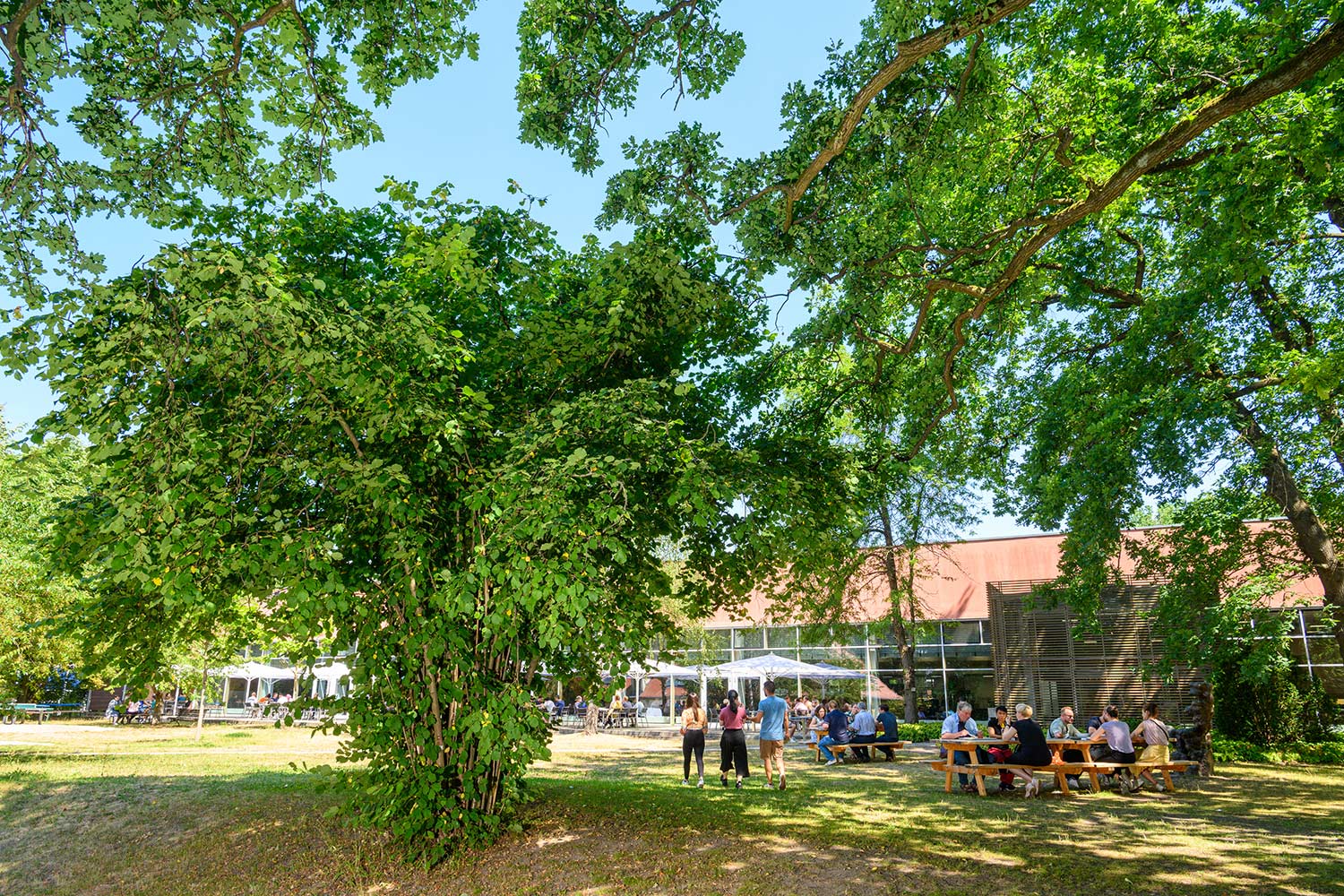
In the middle of the meadow in front of the Mensa stands the 14th plant on the tour: a common hazel, botanical name Corylus avellana, from the birch family or Betulaceae. It is native to Europe and western Asia, where it is still widespread, especially in Anatolia and Mediterranean regions. The region around the Italian town of Avellino near Naples has been known for its hazelnut cultivation for many centuries, and the botanical epithet avellana is a reminder of this.
Common hazels are large, deciduous shrubs. They have several stems; shoots develop at their base and can grow several meters high in the first year, then branch from the second year and later lean to the side. This makes the shrub grow increasingly in width over time. The shrubs grow to usually around five and in rare cases up to eight meters high and equally wide. In rare cases, it grows as a tree and then can stretch up to ten meters in height. Such a specimen can be seen next to the main entrance of the main building of the Max Delbrück Center.
Hazels are flat-rooted plants that can live up to about a hundred years. The bark of young plants has an olive tint, while that of older specimens becomes increasingly grayish and has longitudinal cracks. The leaves are round, up to ten centimeters long, with a double serrated edge; they slightly lighter underneath than on top. In autumn the color is yellow to yellow-orange.
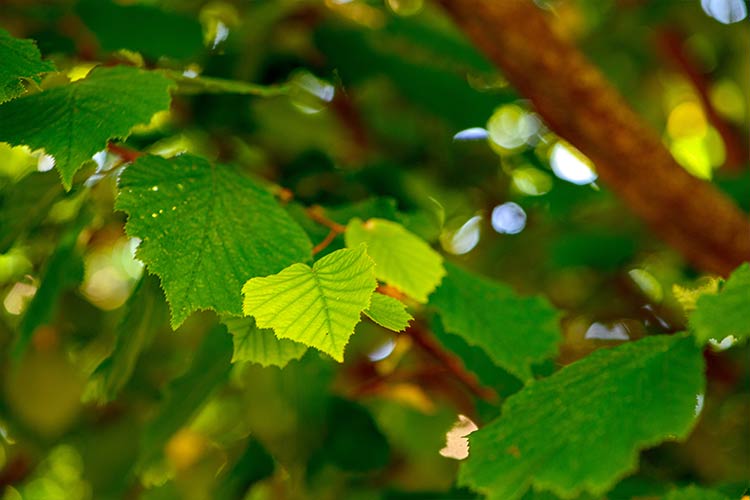
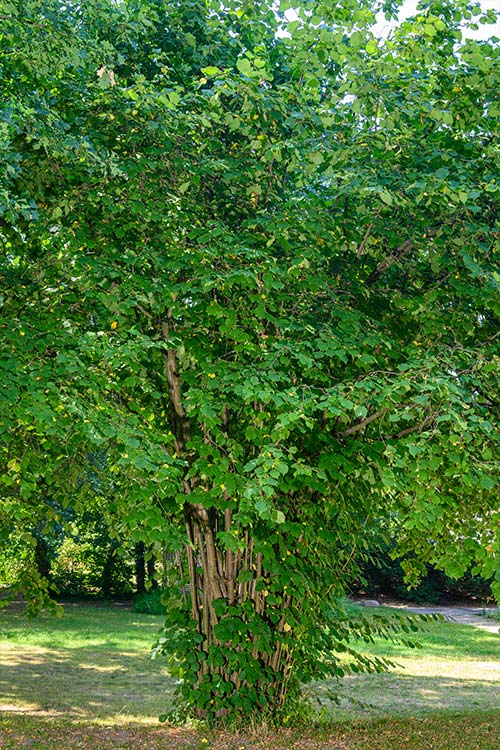
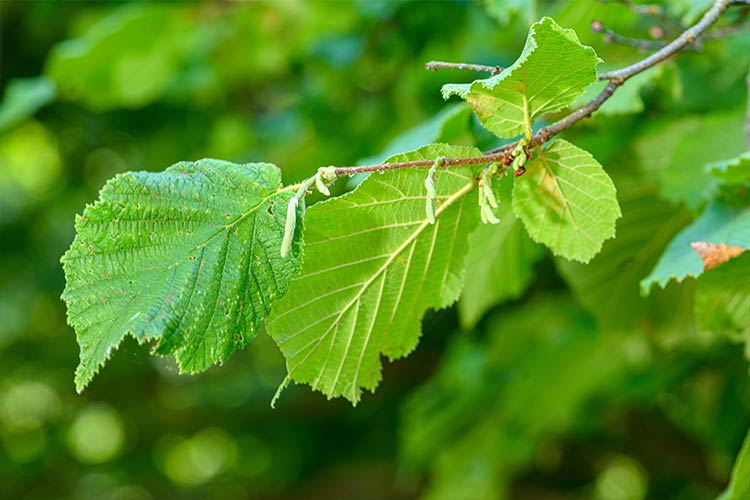
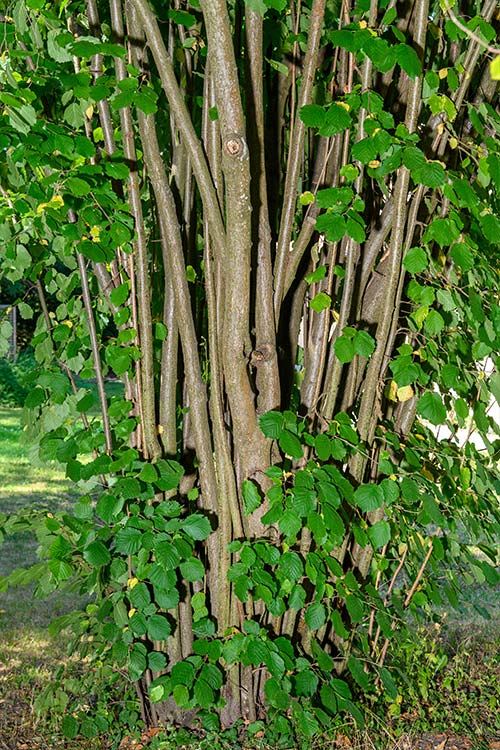
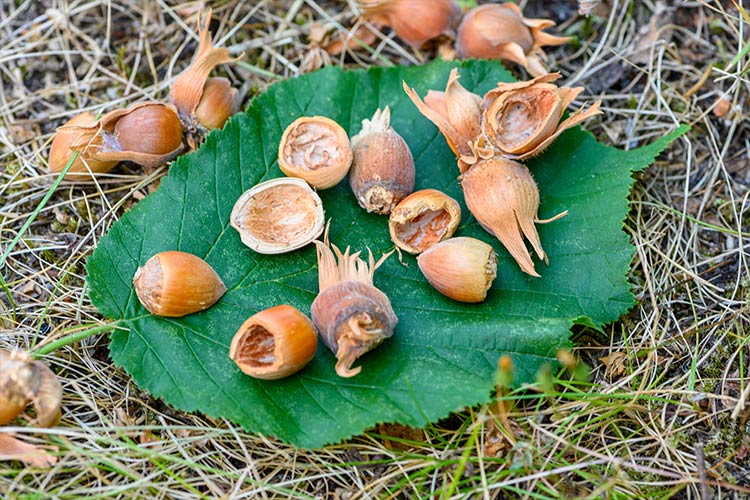
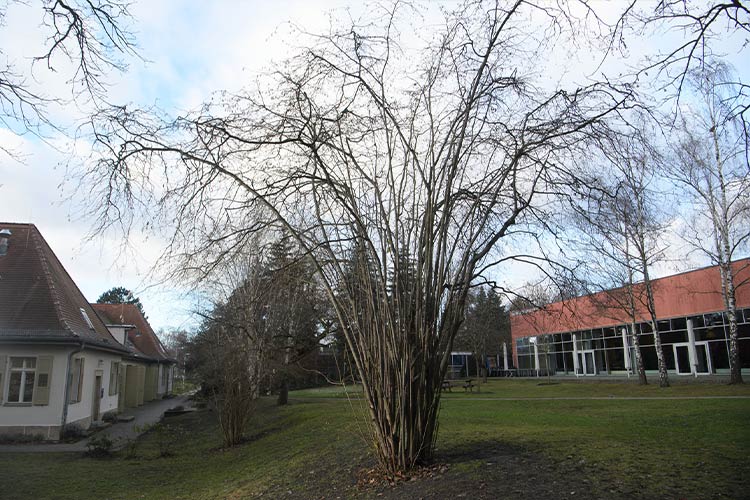
Between February and April, yellow catkins bloom. Towards September and October, the fruits can be harvested, yielding the common hazel that has been known for thousands of years. Most commercially available hazelnuts are not from the common hazel, however, but from the closely related Lambert's hazel (Corylus maxima). Other subtypes exist, but they cannot be clearly distinguished from each other either in shape or genes, which is why they are now considered variants rather than distinct species.
The common hazel is quite undemanding and grows basically in all types of soils. But it thrives best on moist, well-aerated, neutral to slightly alkaline soils with a high humus content. The hazel prefers warm, sunny to semi-shady locations, but is also frost-hardy to about minus thirty degrees.
Mainly the seeds are used. They contain strong allergens, but are otherwise extremely healthy due to their high content of unsaturated fatty acids.
Hazelnut leaves and bark are used as medicines. The leaves contain essential oils, palmitic acid, kerosene, myricitroside, sucrose, taraxerol and β-sitosterol. The bark also contains essential oils, along with tannins and other substances. Both are used in tea mixtures as a substitute for the leaves and bark of the Virginian witch hazel (Hamamelis virginiana) to treat varicose veins, phlebitis, ulcers, and hemorrhages.
Hazelnut oil is rich in triglycerides and is considered a valuable edible oil in dietetics; but it is also used in cosmetics, soap-making, fuel and machine oil.
The common hazel has a long cultural tradition in Europe. In fact, its uses stretch back to Stone Age cultures. Its branches have often been found in both pre-Christian and Christian graves. It is a symbol of immortality, of fertility, spring and (new) beginnings. In ancient Rome it was considered a symbol of peace. In ancient Germania, "Frau Haselin" was not allowed to be cut down, and strangers were only allowed to harvest a handful of nuts from each bush. Special properties were also attributed to the branches. Witches were supposed to be driven away with them. Last but not least, the German expression "geknackte Nuss" (cracked nut) is considered a symbol of knowledge.